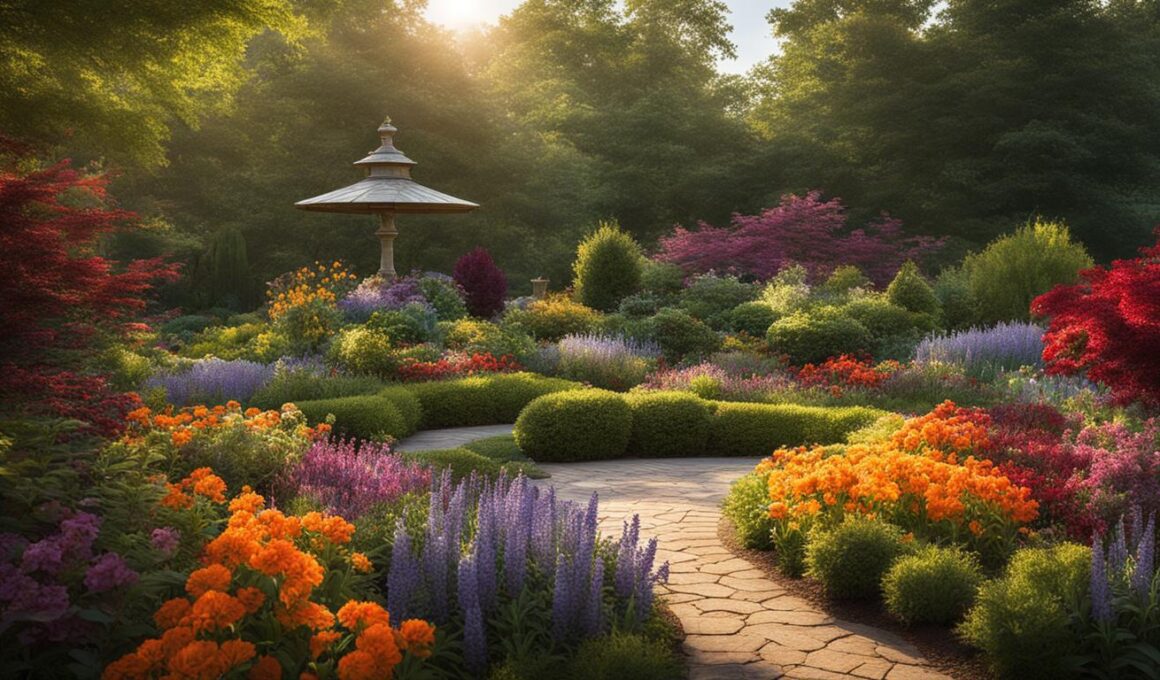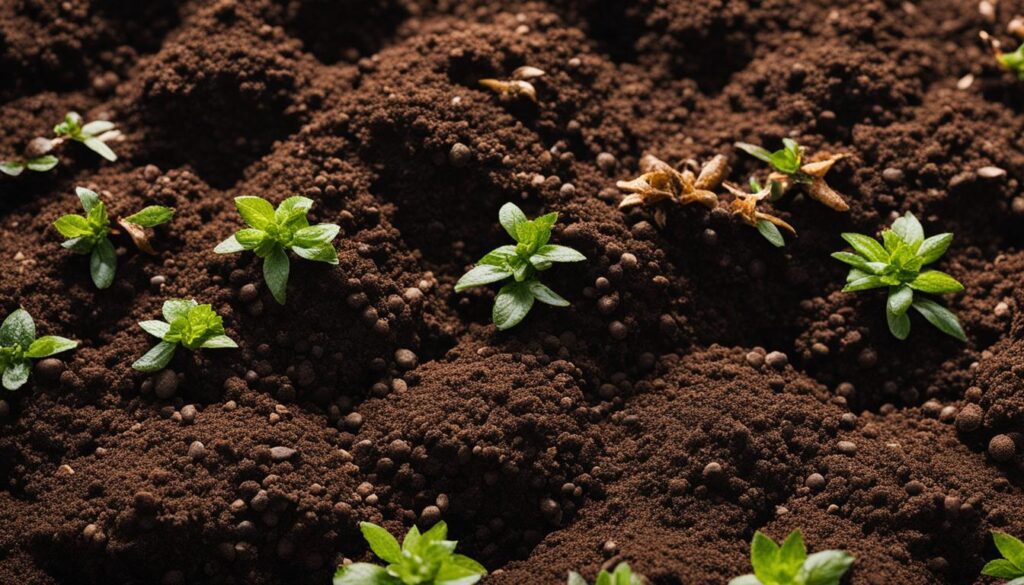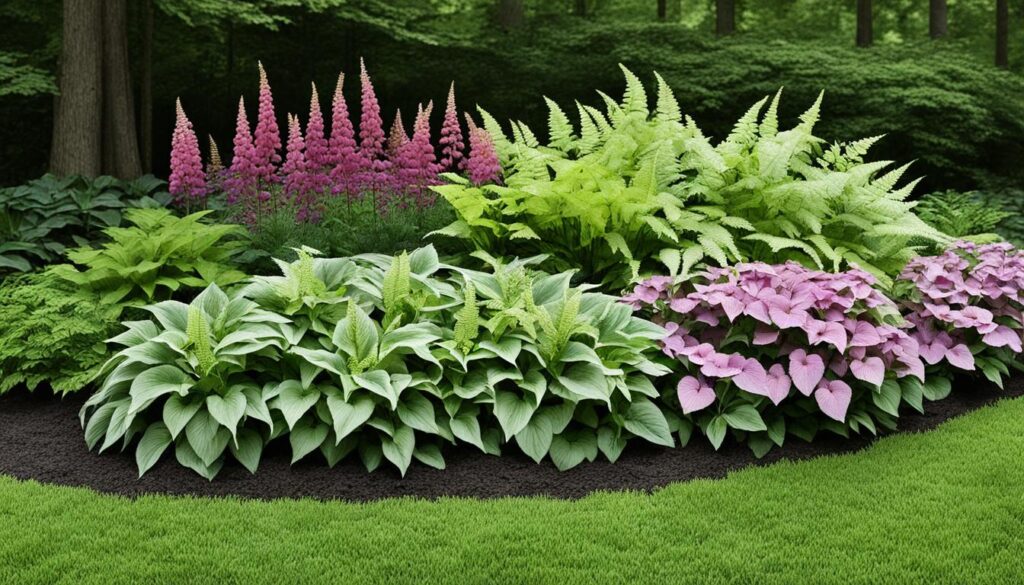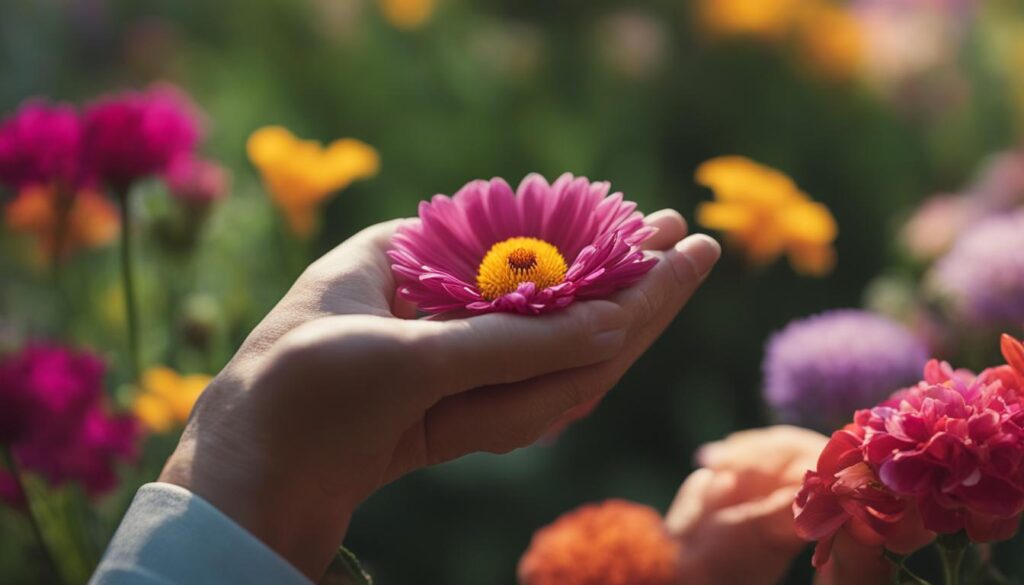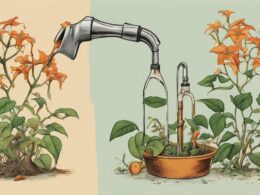As you delve into the world of perennial gardening in the Alabama climate, imagine your garden transformed into a vibrant tapestry of colors season after season. With a keen Southern plant selection and tailored gardening tips, Alabama’s unique growing conditions offer a palette for creating breathtaking displays of enduring beauty. Here’s where you begin your journey towards a perpetually sparkling garden, rich in hues and textures, right at home in the Heart of Dixie.
Whether you’re a seasoned green thumb or new to the soil, understanding the subtleties of the region’s climate is the key to success. We’ll guide you through the essentials of nurturing a garden that not only survives but thrives under the Southern sun. Get ready to explore the best gardening practices, specifically curated for Alabama’s diverse environment, and let’s grow a garden that’s the envy of the neighborhood.
Understanding Alabama’s Gardening Climate
Embarking on the perennial gardening adventure in Alabama means embracing the state’s distinctive climate, characterized by its unique meteorological tapestry. You’ll encounter a spectrum of weather conditions as you tend to your garden – from the mild, unclear reprieves of winter to the long, blistering stretches of summer sun. Each season plays a pivotal role in the life cycle of your perennials, necessitating a savvy selection of flora attuned to these environmental rhythms.
Seasonal Weather Patterns and Their Impacts on Perennials
Alabama’s eclectic weather patterns – which range from temperate winters to sweltering, humid summers – demand a specific gardening strategy. It’s key that you choose frost-resistant perennials, plants hardy enough to endure the occasionally harsh cold snaps yet resilient in the face of the intense heat typical to the region. This precise selection empowers a smooth seasonal transition, ensuring that your perennials don’t just survive, but actually thrive throughout the year.
Benefits of Planting Evergreen Perennials for Year-Round Interest
To counter the bleakness of winter, incorporating evergreen plants into your garden blueprint can be transformative. These steadfast specimens provide much-valued winter interest, their verdant splendor breathing life into gardens that might otherwise be rendered dormant. An array of evergreen perennials not only enhances garden aesthetics but also lays a foundation of continuous greenery, which stands out against the quieter presence of deciduous counterparts slumbering through the colder months.
- Creeping varieties of thyme and sedum bolster ground coverage with their persistent foliage.
- Rhododendrons and camellias serve as robust mid-height options, bearing scents and blossoms even as the mercury dips.
- Tall hollies, with their bright berries, enliven spaces that crave vertical interest.
Whether your garden is an expansive landscape or a cozy nook, selecting the right evergreens promises an oasis of color and texture all year long.
The History and Progression of Perennials in Alabama Gardens
The perennial history Alabama boasts is as rich and vibrant as the gardens it has helped to shape over generations. When you reflect on the gardening evolution that has occurred within the state, you’re examining the tapestry of botanical innovation and adaptation that characterizes Alabama’s diverse horticultural heritage. This intricate pastiche has resulted in a present where perennials are not merely a part of the landscape but are often the stars of the show.
Gardening in Alabama has historically had to contend with a unique set of climatic challenges. Through decades, the flowering varieties that graced the state’s vast and varied gardens had to be as hardy as they were beautiful. Varieties that could withstand the subtropical climate and the soil’s particular demands became enduring favorites among gardeners and the focal points of garden design in the state.
Your appreciation for Alabama horticultural practices is deepened when you consider the creative approaches taken to ensure a garden’s year-round appeal. From the clever integration of perennials that announced the arrival of spring with their vibrant blooms to those that added autumnal color long after the summer’s heat had faded, the horticultural practices here have been fine-tuned to make the most of every season.
- Understand the adaptability of perennial species and the wide spectrum of conditions they can endure.
- Recognize the creative marks left by gardeners who have selected and nurtured these plants over the years.
- Find inspiration in the way these perennials are woven into various garden designs, from butterfly gardens to shaded rock gardens.
In your own perennial endeavors, embracing the legacy of longstanding traditions and practices can lead to exceptional garden displays. The perennials that have thrived in Alabama’s gardens are a testament not just to their own resilience but to the collective horticultural knowledge accumulated over time. Follow this legacy of cultivation, and discover how to harness it in your own garden for breath-taking year-round displays.
- Spring heralds vibrant new growth and the reemergence of beloved perennials from their winter slumber.
- Summer demands that these plants be hardy enough to withstand the season’s fierce heat and humidity.
- Fall offers a chance to enjoy the last flush of flowering before the garden prepares for the quieter winter months.
By aligning your gardening practices with Alabama’s perennial legacy, you can ensure a story of continuous growth and beauty. Let your garden be a living chronicle of the gardening evolution that has shaped Alabama’s horticultural customs, nurturing a plot of land that not only celebrates its past but looks ever-forward to its next blooming chapter.
Prepping the Perfect Alabama Garden Bed for Perennials
Embarking on the creation of lush perennial gardens begins with the foundational task of soil preparation. It’s not just about digging and planting; it’s about nurturing the very substance that will cradle your precious blooms. The quality of your Alabama soil types, along with the efficacy of drainage solutions employed, set the stage for a healthy and visually striking perennial showcase. Like a skilled artisan, your efforts in preparing the garden bed will sculpt the environment in which your colorful array of perennials will thrive for years to come.
Soil Preparation Essentials
Before sowing the first seed or bedding in the first plant, take the time to thoroughly examine and enhance your garden’s soil. Tailoring your approach to Alabama’s variety of soil profiles – from sandy loam to red clay – assures that every species finds its sweet spot. Soil tests are invaluable, helping determine the need for amendments to improve soil fertility. Integrating organic matter, such as compost, is a solid first step, enhancing not just fertility, but also soil structure and moisture retention.
- Addition of aged manure can jump-start the soil’s nutrient levels, giving your perennials a luscious bed to nestle into.
- Rototilling or spading are recommended to incorporate these amendments thoroughly and aerate the soil.
- For more compacted soils, gypsum is a well-recognized amendment that can alleviate heavy soil conditions.
Well-Drained Fertile Soil: A Key to Perennial Health
A perennial garden’s resounding success is synonymous with vibrant, well-drained, and fertile soil. In areas known for problematic drainage, raising the garden bed or utilizing drainage solutions such as French drains or gravel trenches can prevent waterlogged roots, thereby mitigating rot and other moisture-related diseases. Ensuring your garden bed’s soil is rich in organic matter will not only improve drainage but will also contribute to soil fertility, providing a smorgasbord of nutrients for your perennial roots.
- Working in peat moss or perlite can improve the soil’s drainage capacity, especially in heavier Alabama clay soils.
- Maintain a balance of soil moisture with mulching to conserve water and prevent evaporation during Alabama’s warm seasons.
- Strategic placement of perennials with similar water requirements can optimize your garden’s water use efficiency.
With soil that is primed and enriched for the task, you’re not just planting perennials; you’re setting a stage for them to flourish season after season. Remember, the love and diligence you put into soil and garden bed preparation now will be reflected in the vibrant health and splendor of your Alabama garden.
Gardening in the Shade: Best Perennials for Alabama’s Partial Light
As you curate your garden design in Alabama, embracing the areas painted with dappled sunlight invites the introduction of shade gardening techniques and plant selections. In the shaded retreats of your garden, where sunlight filters through high branches or between architectural structures, resides the opportunity to cultivate a lush understory of partial light perennials.
In these cooler, shielded spots, shade tolerant flowers not only flourish, they add a tranquil and verdant feel to the landscape. The key to success in these spaces is choosing the right plants that thrive away from relentless sunbeams, ensuring your garden truly sparkles with diverse life in every corner.
- Astilbe (Astilbe spp.) – Their feathery, flower plumes offer a variety of shades and a soft texture that complements the solidity of shaded zones.
- Ferns – Evergreen or deciduous, ferns provide a lush backdrop or groundcover, thriving in the shaded humidity of Alabama’s climate.
- Hostas – With their wide, verdant leaves, hostas are a favorite among garden design Alabama aficionados, bringing life and color to partially lit spaces.
- Heuchera – Also known as coral bells, these perennials provide year-round foliage color and vibrant flower spikes that appeal to gardeners and pollinators alike.
Integrating these shade-loving species into your garden creates a seamless transition from the sun-laden edges to the shadowy alcoves. Moreover, these plants offer a peaceful harmonization to your garden’s design, beckoning visitors to stroll and admire the varying textures and hues.
When planning your shade garden, focus on layering—place taller shade dwellers like Hydrangea or Oakleaf Hydrangea in the back, with medium and low growers like Heuchera and Ferns toward the front. Remember to consider the soil moisture; these shaded areas may retain more moisture, requiring less frequent watering than their sun-basked counterparts.
Don’t underestimate the visual power of foliage in partial light perennials; variegated leaves or those with interesting shapes can add visual interest in lieu of bright blooms. Let your imagination roam as you explore the variety of forms and tones these shade-adapted wonders can bring to your Alabama garden.
- Remember to mulch around your shade perennials to maintain soil moisture and temperature, essential for their thriving in Alabama’s summer heat.
- Be mindful of the planting depth; shade perennials often have shallow roots and can suffer if buried too deeply in the soil.
By planting the right mix of shade gardening staples and Alabama-specific selections, your garden will maintain its allure, even in the gentle penumbra of partial light. Embrace the softer side of Alabama’s sunshine with a curated selection of shade tolerant flowers, and watch your shaded garden areas come to life.
Maintaining Vibrant Colors: Best Practices for Perennial Bloom Times
To keep your Alabama garden bursting with vibrant blooms, a regimen of perennial maintenance is a must. Every gardener yearns for those picturesque, richly-hued flowers that transform a simple bed into a stunning landscape feature. Below are tried-and-true methods to ensure that your perennials receive the care they need to remain a breathtaking visual delight.
Watering Regimens for Alabama Perennials
Just as we humans thrive on a balanced diet, perennials demand an adequate and consistent watering schedule to produce those much-admired vibrant blooms. In the Alabama climate, watering perennials with up to one inch of water weekly is ideal. Choose drip irrigation or soaker hoses to deliver water directly to the root zone, minimizing leaf wetness and thus reducing the disease pressure which often plagues these types of plants.
- Employ rain gauges to measure how much water your garden receives naturally versus what you’ll need to add manually.
- Adjust your watering schedule based on rainfall and observe your perennials for signs of drought stress or overwatering.
- Keep track of the weekly hydration levels to promote optimal absorption while preventing the over-saturation of your precious plants.
The Art of Deadheading to Extend Blooms
As the season progresses, deadheading flowers emerges as a vital task to extend the season of colorful displays. Beyond just a tidying technique, deadheading channels essential energy back into the plant, coaxing them to produce additional blossoms. This simple yet effective practice can significantly lengthen the blooming period, allowing a longer enjoyment of your garden’s beauty.
- Regularly inspect your perennials for spent blooms and snip them off just above the first set of healthy leaves or buds.
- Many perennials, when deadheaded, are encouraged to re-flower, gifting your garden with a repeat presentation of vivid colors.
- For certain species, strategic cutting can also prevent undesired self-seeding, keeping your garden’s aesthetic intentional and harmonious.
By following these straightforward practices of perennial maintenance, you, the steadfast gardener, will lay the groundwork for a lush, vibrant space that captivates every onlooker. Invest time in watering and deadheading now, and soon enough, you’ll bask in the glory of sustained, dynamic blooms throughout the growing seasons in your Alabama sanctuary.
Choosing the Best Flowers To Plant In Alabama
In the heart of the South, your Alabama garden can become a living masterpiece with a vibrant perennial selection that underscores the state’s natural beauty. When diving into garden planning, it’s essential to select the best Alabama flowers, considering not only their visual appeal but also their adaptability to the regional climate and soil conditions.
Prepping your garden with success in mind means incorporating planting strategies that cater to your environment. Alabama’s climate offers the perfect canvas for a plethora of perennials, each promising to inject a burst of color throughout the seasons. Here’s a guide to help you create a perennial garden that glows with life and entices local pollinators.
- Balloon Flower (Platycodon grandiflorus) – An enchanting addition to any Alabama garden, the balloon flower dazzles with vibrant blooms that resemble hot air balloons before they unfurl. Perfect for sun-kissed spots, this plant requires little upkeep once established, making it a top pick for Southern gardeners.
- Blanket Flower (Gaillardia x grandiflora) – Aptly named for its ability to cover gardens in a blanket of color, this sun-loving flower thrives in the heat and can withstand drier conditions, exemplifying the resilience sought after in an Alabama perennial.
- Bugleweed (Ajuga reptans) – For those shaded spots in your garden, bugleweed offers not only vibrant foliage but also spires of blue flowers that attract pollinators from early to late spring.
Gardeners looking to create a sustainable, low-maintenance oasis will find these perennials a fitting selection. Aside from their aesthetic value, they serve an ecological role, drawing in hummingbirds and butterflies, thus contributing to local biodiversity.
- To begin, assess your garden’s areas of full sun and partial shade, matching each plant’s requirements to their future home in your landscape.
- Consider the soil type and drainage in each area, amending where necessary to provide the well-drained, fertile ground that most perennials favor.
- Plan for a staggered bloom time throughout the seasons, ensuring that at any given point, a part of your garden is in its prime.
With these guidelines, your hand-picked perennials will prove not just beautiful, but also enduring elements of your Alabama landscape. Embrace the art of perennials, and your garden will reward you with a pageantry of blooms and the companionship of grateful wildlife visitors.
Advanced Care Techniques for Alabama Perennials
As you immerse yourself in the world of perennial care in Alabama, understanding when to divide and transplant your garden’s hardy dwellers is crucial. A strategic approach to perennial management will not only enhance the health of your plants but will also maximize their bloom potential. Coupling these practices with diligent preparation for the dormant season lays the groundwork for a thriving spring display.
When to Divide and Transplant for Optimal Growth
Dividing perennials is a rejuvenating practice, promoting healthy growth and abundant flowering. In Alabama, the timing of these activities depends largely on the type of perennial you are dealing with. Summertime bloomers are best divided in the early spring after the last frost has passed, while those that grace your garden with springtime colors should be divided in the fall, allowing them time to establish before the winter chill.
- Assess the health of your perennials, looking out for signs that indicate a need for division such as center die-back or reduced flowering.
- Utilize proper transplanting techniques, keeping root disturbance to a minimum and ensuring each division has adequate roots.
- After dividing, transplant the perennials promptly, watering them in well to encourage quick root development.
Preparing for the Dormant Season: Task Checklist
As the growing season transitions to rest, preparing your garden for the dormant period is imperative. This preparation includes mulching to protect root systems and cutting down spent foliage to deter pests and diseases. By tending to these tasks, you make a significant difference in the perennial bed’s ability to weather the dormant season and bounce back with vigor come spring.
- Apply a generous layer of mulch to insulate perennial roots against the sudden temperature drops typical to Alabama winters.
- Trim back dead foliage to minimize the chances of disease carryover into the new growing season.
- Review perennial care schedules and plan your garden’s dormant season preparation, ensuring a smooth and healthy transition.
By adopting these advanced perennial care practices, you are not just maintaining your garden – you are strategically enhancing it for future seasons. Pay close attention to the individual needs of your plants, and use these tips to ensure your Alabama garden continues to provide beauty and enjoyment year after year.
Spring-to-Summer Transition: Managing Perennial Growth
With the gentle wane of spring in Alabama, your garden teeters on the cusp of seasonal garden transition. This period commands a heightened level of attention, as the burgeoning warmth necessitates a shift in your gardening approach. It’s time to roll up your sleeves for spring gardening Alabama style, where strategic care can ensure that your perennials gleam throughout the hot months ahead.
Your summer perennial care focuses largely on growth management. The first step is to cut back leggy perennials that may have overextended during spring’s exuberance. This not only tidies up your garden but also encourages stronger, more compact growth capable of withstanding the intensity of Alabama’s summer. Simultaneously, staking taller varieties helps prevent them from succumbing to the inevitable summer storms. Remember, these supportive actions rectify and reinforce, preparing your perennials for the glory of summer’s full bloom.
In managing your garden’s hydration, consistency is pivotal. The summer’s heat is relentless, and maintaining adequate moisture levels ensures your perennials remain vibrant, not just viable. Consider mulching to retain soil moisture, all the while being watchful for indicators of under or over-watering. This delicate balance, achieved through vigilant care, allows for a seamless ushering of your garden from spring’s fresh debut to summer’s lush zenith. Heed these essentials, and your Alabama garden will stand as a testament to well-managed perennial growth, boasting robust health and enduring radiance.
How Can I Adapt Perennial Gardening Techniques for the Indiana Climate?
When it comes to gardening in Indiana, it’s essential to choose lush perennials for Indiana that can adapt to the climate. Look for plants like coneflower, black-eyed Susan, and sedum which thrive in Indiana’s varying temperatures. Mulching and regular watering will also help these perennials flourish in the state.





